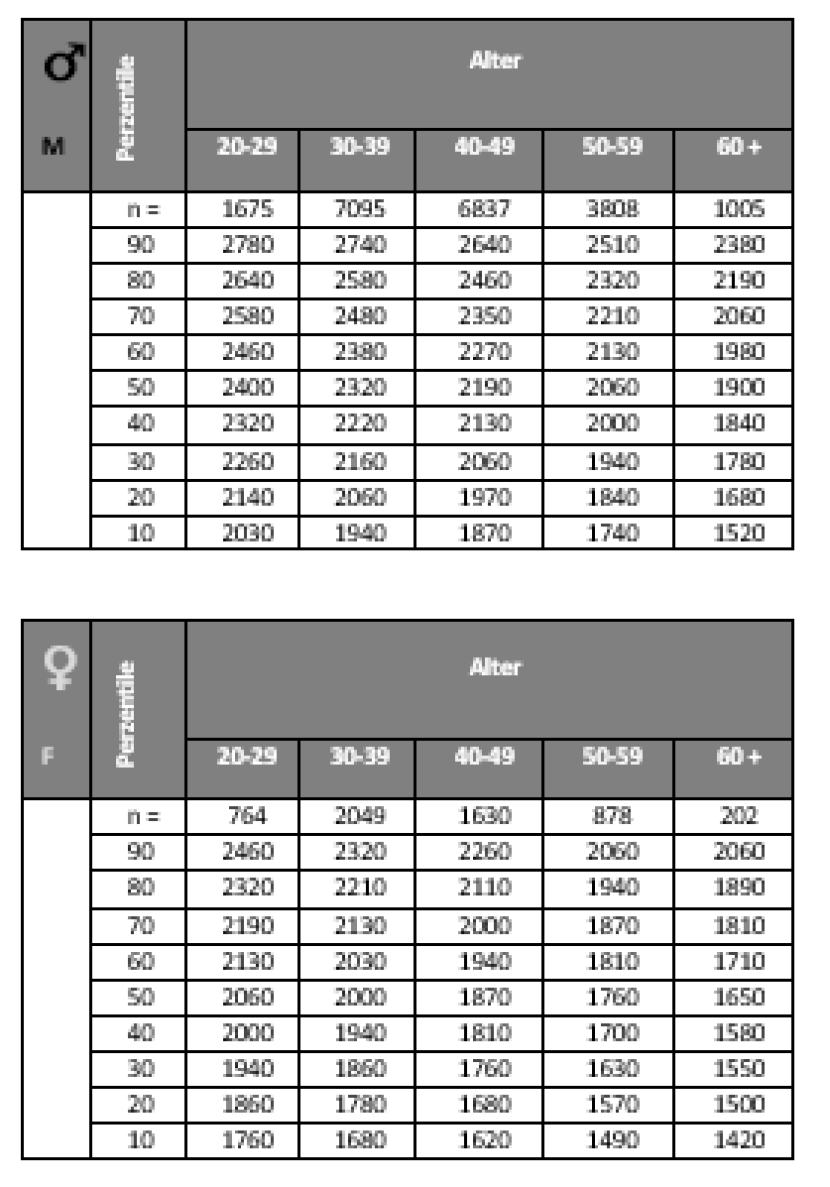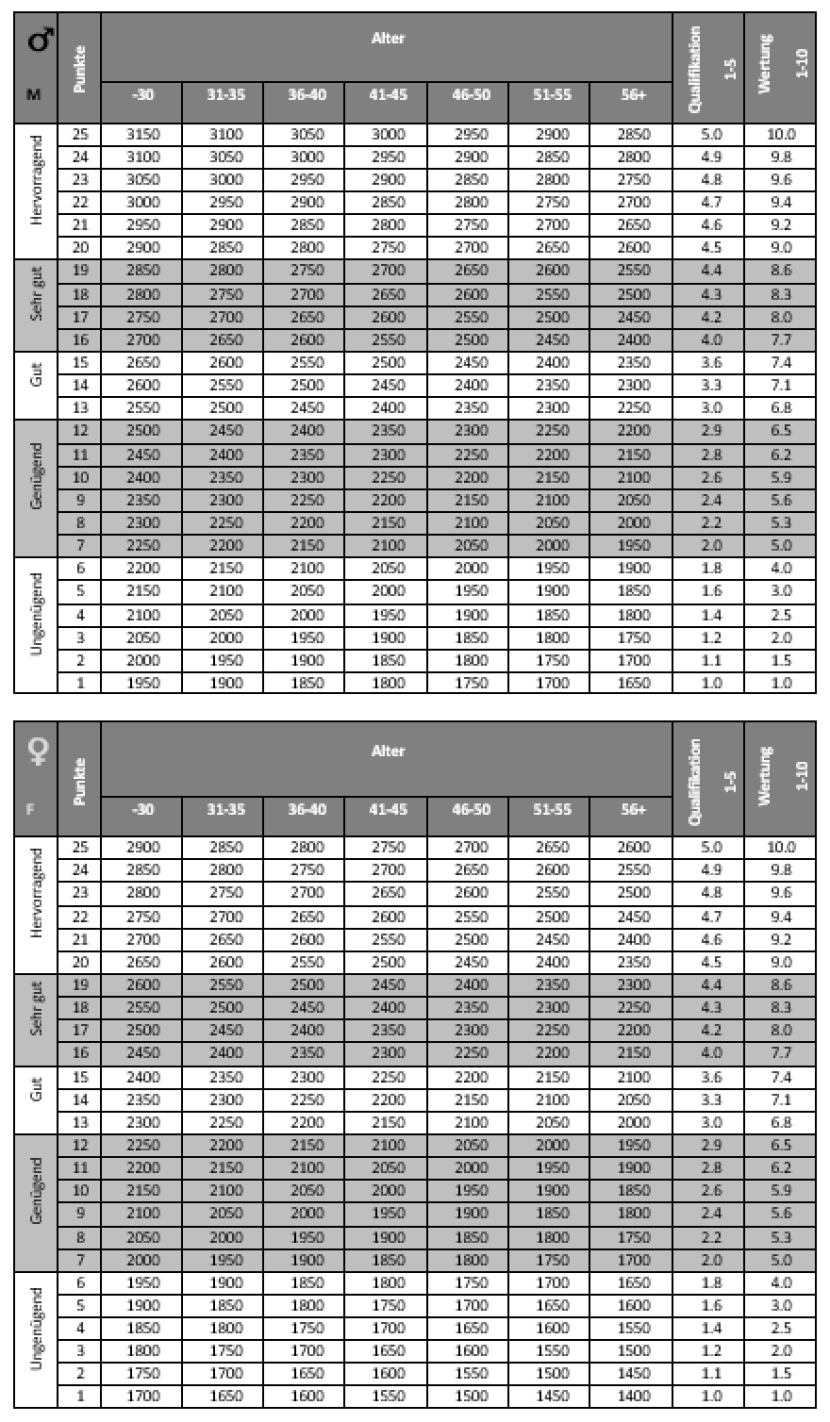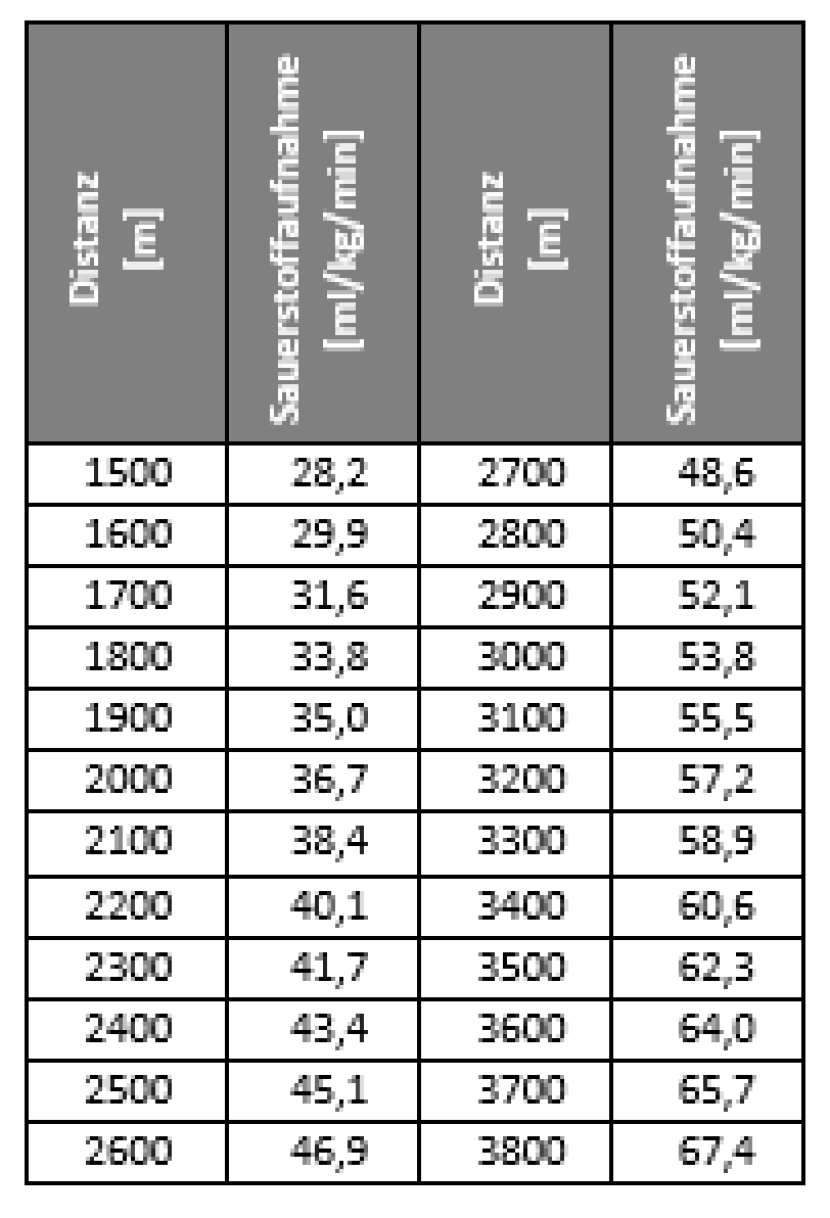12-minute running test
The 12-minute running test is very easy to perform and provides a good indication of aerobic performance.
A flat track is chosen to carry out the test. The ground must be firm (a finned track, for example, is not suitable as the additional load caused by the soft surface distorts the evaluation). A circular track or a defined lap in the hall (e.g. 8-person run) is advantageous. The test result is the distance covered within 12 minutes. In order to calculate the distance, the total length of a lap must be measured and sections marked (e.g. every 50 metres). The final result is determined by multiplying the number of laps by the distance of a lap and adding the distance covered on the last lap (nearest 50 metre marker). Ideally, special scoring tables (percentile tables) are created for certain groups of test subjects using statistical methods. Otherwise, the following tables can be used to assess performance:
Running distance [m] in the 12-minute running test: Table 1 = Cooper; Table 2 = Military.


Logically, the average running speed can also be calculated in this test:
The anaerobic threshold can also be estimated. Untrained athletes run almost exactly at their individual anaerobic threshold during the 12 minutes, while trained athletes always run about 1 km/h faster than at the anaerobic threshold. The comparison with the anaerobic threshold (v iANS) is therefore as follows:
Corresponding VO2Max values can be assigned to estimate the running performance in the 12-minute running test. Here is an example:

More info: